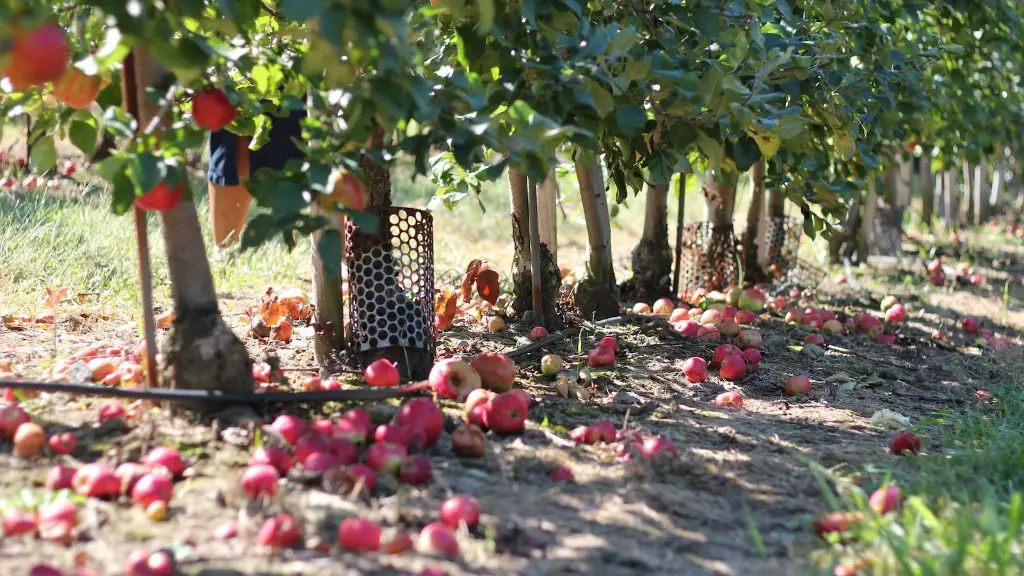Lemon cypress trees can be quite tall – some of them can reach up to 15 feet or more! They typically reach about 10 to 12 feet in height and are known for having a slender, columnar shape with a somewhat round or cone-shaped top. The lemon cypress tree is a hybrid of two different types of cypress plants, the Lawson cypress and the Monterey cypress, and is an evergreen tree often used in ornamental landscaping.
Lemon cypress trees are resilient plants and can thrive in many climates, including hot, dry climates. They do require plenty of sunlight and adequate water during the summer months, though, as well as a well-drained soil. Lemon cypress trees are moderately slow-growing, but should respond well to proper pruning and maintenance.
These trees don’t require a lot of maintenance, but it is important to give them plenty of water during the summer, especially if the climate is dry. Regular fertilization and pruning also help keep a lemon cypress tree healthy, allowing it to reach its full potential height. Proper pruning is especially important as it will help keep the shape of the tree even and attractive.
Lemon cypress trees are also susceptible to pests and diseases, such as fungal infections, scales, and leaf blight. It is important to keep an eye out for any signs of infestation and treat the tree accordingly. Regular inspection and proper maintenance will help keep a lemon cypress tree healthy, allowing it to reach its full potential height.
One of the most popular uses for lemon cypress trees is for ornamental landscaping. They are often used to add structure and interest to a garden, and their slender, conical shape can be used to create pathways or provide a backdrop for other plantings. The bright yellow foliage of the lemon cypress tree is also quite attractive and provides a unique textural element to the landscape.
Growing and Caring for Lemon Cypress Trees
Lemon cypress trees are resilient and can thrive in many climates, provided they receive the proper care. The trees should be planted in well-drained soil and should receive plenty of sunlight each day. In terms of watering, lemon cypress trees should be watered at least once a week, but more often during periods of extended drought. Additionally, these trees should receive regular fertilization to keep them healthy and promote healthy growth.
For optimal results, prune lemon cypress trees regularly to encourage a more attractive shape. Dead or damaged branches should be promptly removed, and the tree should be trimmed at least once a year to help it maintain a desirable shape. It’s also important to monitor the tree regularly for signs of pests or diseases in order to keep the tree healthy and thriving.
Fertilizing and Pruning Lemon Cypress Trees
Feeding lemon cypress trees regularly with fertilizer can help promote faster and healthier growth and allow the tree to reach its full potential height. A fertilizer formulated specifically for conifers is recommended, as it will provide the essential nutrients needed for optimum growth. Additionally, regular pruning should be done to remove dead or damaged branches, as well as to help keep the tree looking tidy and attractive.
When pruning a lemon cypress tree, it’s important to avoid taking too much off the top of the tree, as this can adversely affect its growth. Trimming should be done back to a node (a point on the stem from which a leaf or twig grows). This allows for increased air circulation in the canopy and helps prevent disease. Additionally, try not to prune more than 10-15% of the tree when pruning. Too much of a trim can remove important branches and leaves, leading to a stunted or unevenly shaped tree.
Winterizing a Lemon Cypress Tree
Lemon cypress trees can survive in most moderate climates, but some extra care should be taken in colder climates. During the winter months, it’s important to keep the root system of a lemon cypress tree warm and moist. This can be done by adding a layer of mulch around the base of the tree, which helps to insulate it from the cold winter temperatures. Additionally, it’s important to keep the tree watered during the winter, as dry soil can cause the tree’s roots to become damaged.
It may also be a good idea to wrap the tree in burlap (a heavy woven fabric) or a tree wrap to protect it from extreme cold temperatures. This helps keep warmth in and cold temperatures out. Additionally, it’s important to keep an eye out for signs of pests or disease, as lemon cypress trees can be susceptible to both.
Properly Planting a Lemon Cypress Tree
When planting a lemon cypress tree, it’s important to dig a hole that is large enough for the root system to fit comfortably. It’s recommended to dig the hole at least twice as wide as the root ball, but not deeper. The soil around the root ball should be firmly packed to ensure the tree is properly seated in the ground. Once the tree is planted, be sure to keep the soil moist but not overly wet.
When planting a lemon cypress tree, it’s also important to make sure the tree has plenty of space to grow. Too little room can cause the tree to become crowded and grow at an uneven rate, which can affect its shape and overall health. Planting the tree in an appropriate location – with plenty of sunlight and well-drained soil – is key for a healthy and thriving tree.
The Benefits of a Lemon Cypress Tree
The lemon cypress tree is a great choice for those looking to add a unique touch to their garden or landscape. These trees are tough and resilient, and can thrive in many climates with minimal care. They also have a unique, attractive shape, with bright yellow foliage that adds texture and interest to the landscape. To top it off, these trees are also great for providing structure and can be used to create pathways or provide a backdrop for other plants.
Overall, those looking for a unique and resilient tree option should definitely consider a lemon cypress tree. Just a few simple steps of proper care, such as fertilizing and pruning regularly, will help keep the tree healthy and can even help it reach its full potential of 15 feet or even more.



